Physical adaptations
The cheetah is the fastest land animal, able to reach speeds of 60-70 mph. A useful ability when hunting antelope which can run fast themselves and also zigzag to throw the predator off. This is when the cheetah’s long, thick tail comes in handy. The tail helps them balance but also acts as a rudder to turn sharply as their prey changes direction. They also have two tear marks that run from the tear duct down to the edge of their mouth which helps deflect the sun’s glare while they are hunting.
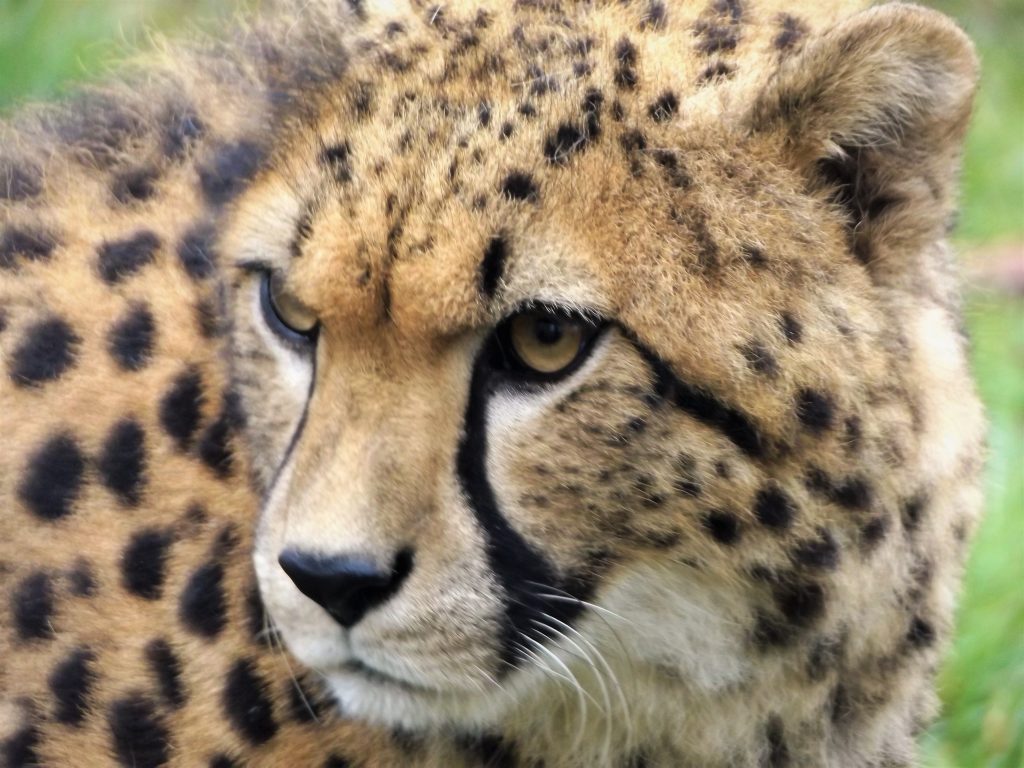
They are built like a greyhound with slender frame, long legs and deep chest. The chest holds a big heart and lungs to pump oxygen around the body quickly. To take in enough oxygen they have large nostrils. Their feet are not as rounded as most cats and they are the only feline species with non-retractable claws. All vital to run as fast as they do. However, while they can move quickly they can only do so for around 250m as their body begins to overheat. Therefore, they may have to wait after catching their prey before they can start eating, making them vulnerable to predators who will either take their prey or kill them.
Cheetah cubs
They can have 2-8 cubs in a litter and this is vital as they are the target for many predators including hyena and lions. They too are specially designed for survival. Along their back they have long, silver-grey fur which is believed to resemble a honey badger. These are ferocious members of the weasel family and will take on anything that tries to attack them. Resembling one may just be enough for the cub to evade a predator.
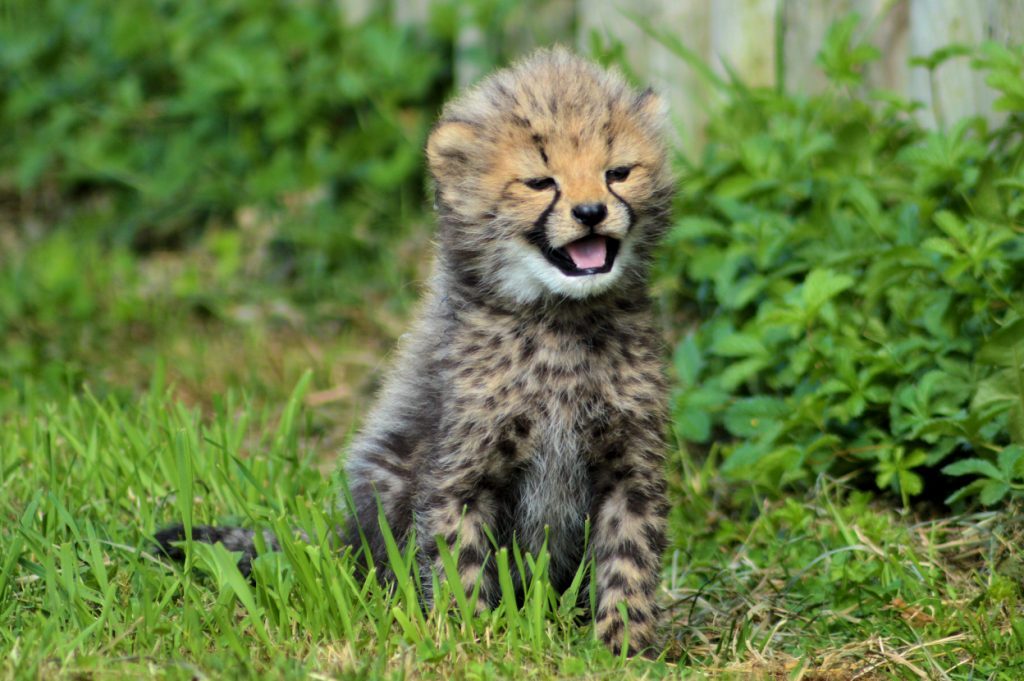
Female cheetahs rear their cubs alone and new mothers must learn fast. Cub mortality is exceptionally high. When the cubs first leave the den at around 6 weeks old they are at their most vulnerable with only 1 in 10 surviving. Those that do survive leave their mothers at around 18 months. Females go alone but males may team up and form a coalition.
Cheetah populations
All this is a good reason in itself to dedicate a day to this amazing creature but unfortunately more pressing reasons have marked the 4th December as the day for raising awareness for the cheetah.
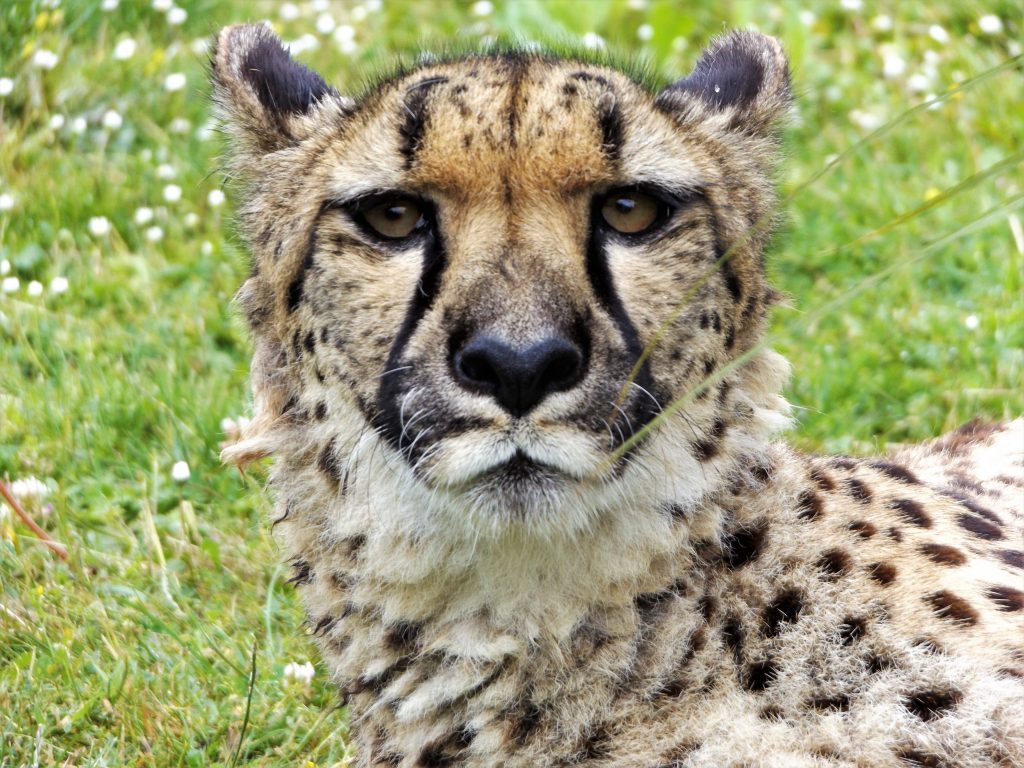
There are less than 7500 individuals left in the wild and these are spread over scattered regions. Habitat loss and fragmentation are common problems affecting animals all across the world. We are simply running out of wilderness.
Human- wildlife conflict is also having an impact on numbers as in some areas of Africa they are considered vermin and killed. However, it’s not just culling that has impacted the cheetah. The illegal wildlife trade is worth billions and deals in live animals and their parts. The Asiatic cheetah, less known than its African descendent once roamed throughout India, Afghanistan, Pakistan and central Asia. Today they have only been recorded in Iran. Records from 2005-2006 identified a possible 50-60 animals but more recently this number may be as few as 20. The pet trade is likely to be the greatest factor in this as throughout history the cheetah has been used as both a status symbol and a hunter’s tool. Today cubs are still being plucked straight from the wild to cover demand.
International Cheetah Day gives us an opportunity to spread the word for the cheetah’s plight in the hope of changing its future. Without good conservation we may lose an iconic cat in our wilderness.
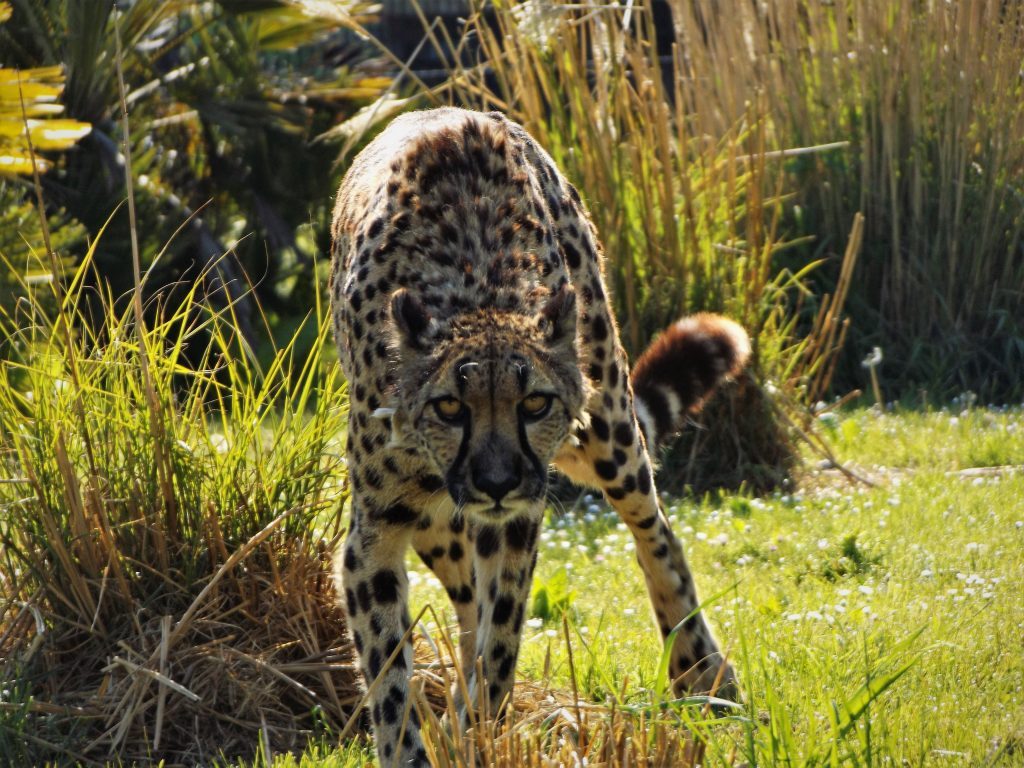
At the park
Here at Wingham Wildlife Park we have Kikay, whilst at Sandwich Wildlife Park we have her sister Asha. They came to us together from Hamilton zoo. Kikay may be well known to you as she had a litter of three cubs in 2017 called Ash, Rowan and Willow who quickly became the centre of attention. She proved to be an excellent mum.
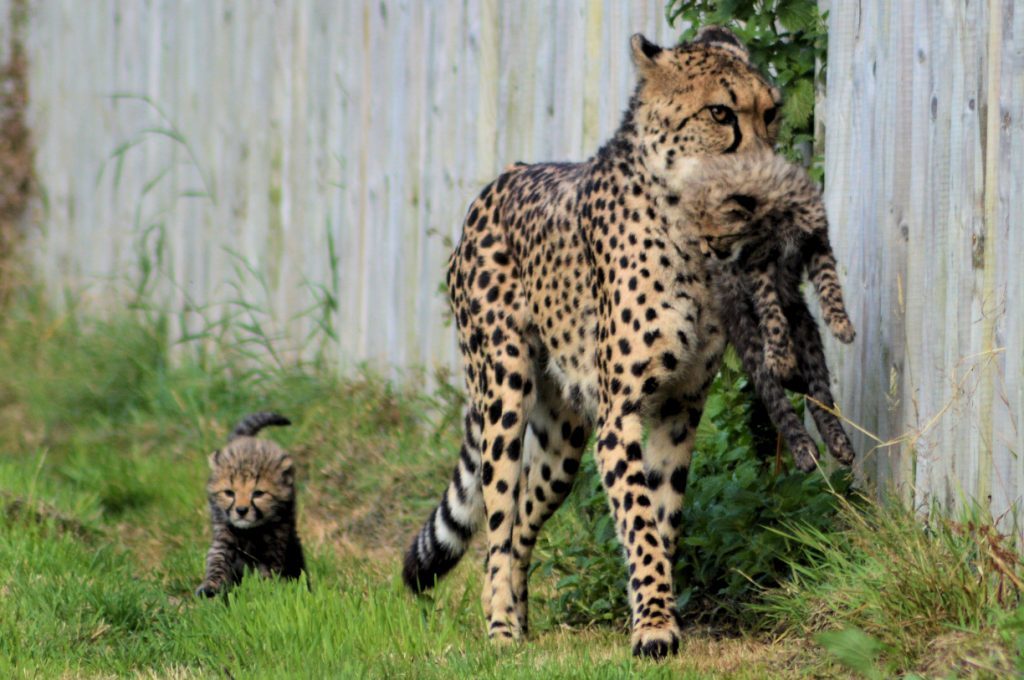
All three of her cubs have now moved on to their new homes and both girls are on their own as they would be in the wild. Kikay may take herself off to the end of her enclosure for some much needed ‘me time’ but soon comes down to the front if there is any commotion or in the afternoon with the promise of dinner.
Her sister Asha over at Sandwich takes part in experiences giving the public an opportunity to get up close and help with some training. This training allows us to do health checks with the animals without the need for anaesthetics, greatly improving their welfare.
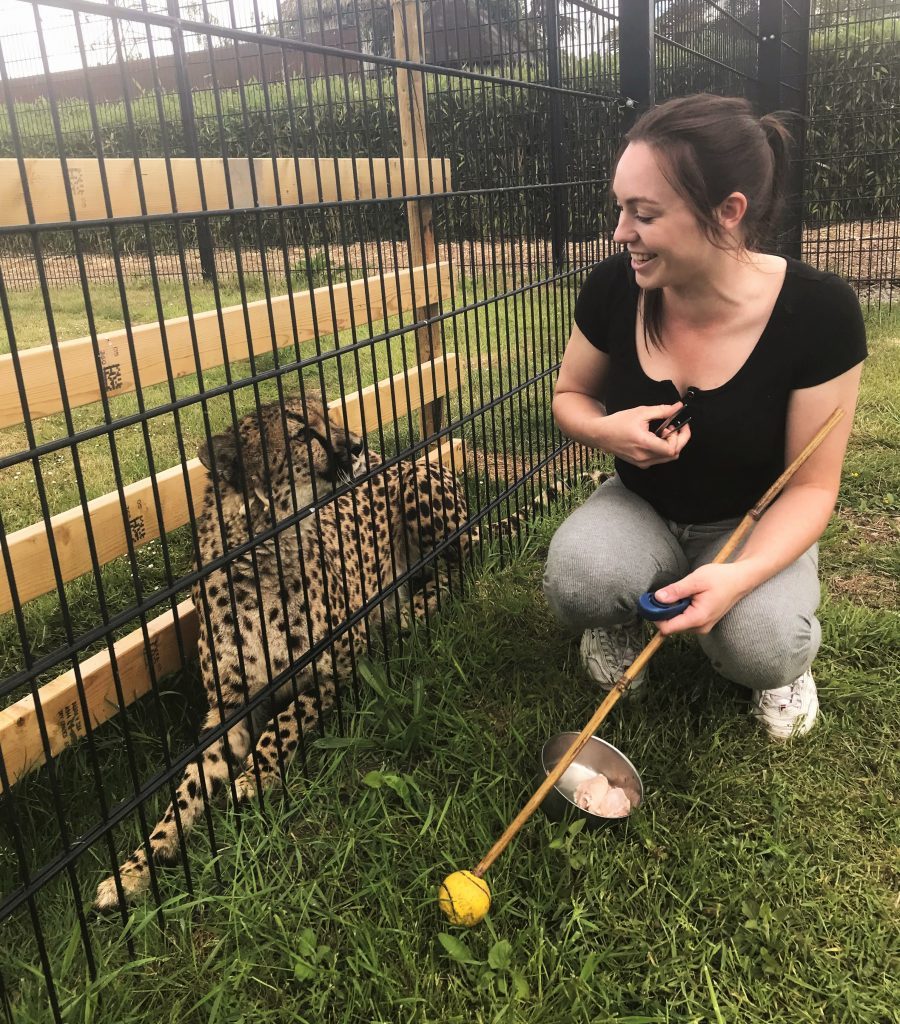
While the cheetah is not included in the 2pm big cat talk, the carnivore keepers here at Wingham are more than happy to answer any questions you may have at the end so please ask away.


